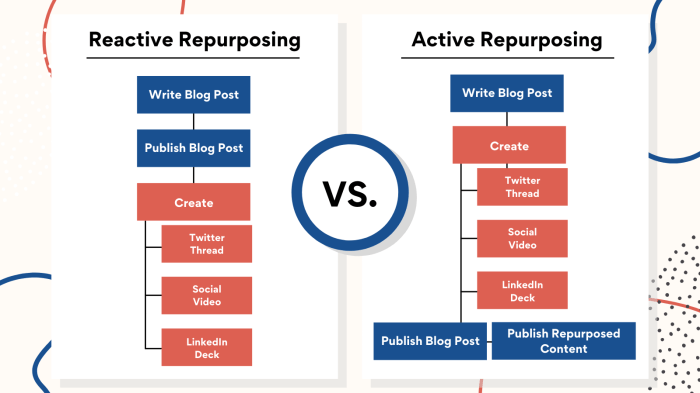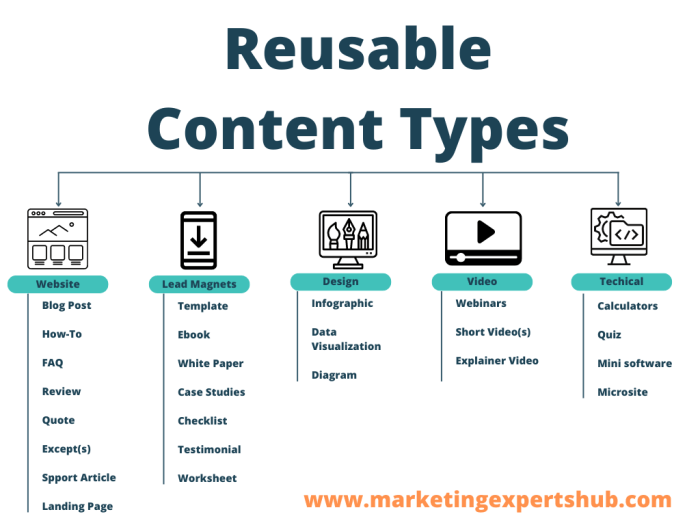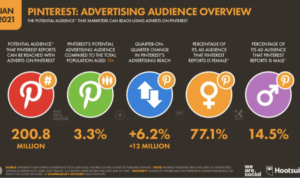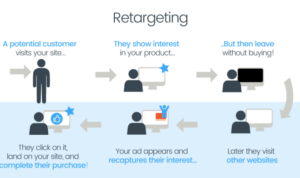Kicking off with Developing a Content Repurposing Plan, this topic dives into the benefits of repurposing content to save time and resources while enhancing reach and engagement. Get ready to explore the ins and outs of creating a stellar strategy!
Why Develop a Content Repurposing Plan?: Developing A Content Repurposing Plan
Developing a content repurposing plan is crucial for maximizing the reach and impact of your content. By repurposing existing content, you can save time and resources while reaching a wider audience and increasing engagement.
Benefits of Content Repurposing
Repurposing content allows you to extend the lifespan of your existing content by adapting it to different formats and platforms. For example, you can turn a blog post into a video, infographic, or podcast, reaching audiences who prefer different types of content consumption. This not only saves time on creating new content from scratch but also ensures that your message reaches a larger and more diverse audience.
Saving Time and Resources
Instead of constantly creating new content, repurposing allows you to leverage the content you already have. By repurposing existing content, you can focus your resources on promoting and optimizing your content, rather than starting from scratch each time. This can lead to increased efficiency and productivity in your content creation process.
Improving Content Reach and Engagement
A well-thought-out content repurposing plan can improve the reach and engagement of your content. By repurposing content for different platforms and audiences, you can increase the visibility of your brand and attract new followers or customers. Additionally, repurposing content can help reinforce your messaging and brand identity across various channels, leading to higher engagement and interaction with your audience.
Creating a Content Repurposing Strategy

Developing a content repurposing plan involves several key steps to ensure effectiveness and efficiency. The process typically includes identifying suitable content for repurposing, aligning repurposed content with different platforms and audience preferences, and maximizing the reach and impact of the content.
Identifying Suitable Content for Repurposing
To identify content that is suitable for repurposing, consider the following factors:
- Evergreen Content: Look for content that remains relevant over time and can be updated or repackaged for a new audience.
- High-Performing Content: Identify top-performing content in terms of engagement, traffic, and conversions that can be repurposed to reach a wider audience.
- Underutilized Content: Review content that has not reached its full potential and can be repurposed to increase visibility and impact.
Aligning Repurposed Content with Different Platforms and Audience Preferences, Developing a Content Repurposing Plan
Tips for aligning repurposed content with different platforms and audience preferences include:
- Customize Content Formats: Adapt the content format (e.g., blog post, infographic, video) to suit the preferences of the target audience on each platform.
- Optimize for : Ensure that repurposed content is optimized for search engines to improve visibility and reach across platforms.
- Engage with Audience: Monitor audience feedback and engagement to tailor repurposed content to meet the needs and interests of the target audience.
Tools and Resources for Content Repurposing
Content repurposing can be made much more efficient and effective with the help of various tools and resources available in the market. These tools not only streamline the repurposing process but also provide valuable insights into the success of your repurposed content.
Automation Tools
Automation tools play a crucial role in speeding up the content repurposing process. Tools like Buffer, Hootsuite, and MeetEdgar allow you to schedule and automate the sharing of repurposed content across different platforms. This not only saves time but also ensures consistent and timely delivery of content to your audience.
Analytics Tools
Analytics tools are essential for measuring the success and impact of your repurposed content. Platforms like Google Analytics, SEMrush, and HubSpot provide valuable data on how your repurposed content is performing, including metrics such as page views, engagement rate, and conversion rates. By analyzing this data, you can make informed decisions on what type of content to repurpose and how to optimize it for better results.
Challenges and Solutions in Content Repurposing

Content repurposing comes with its own set of challenges that can hinder the success of a repurposing plan. However, with the right strategies and solutions in place, these challenges can be overcome to ensure consistency and quality across all repurposed content.
Identifying Relevant Content
When repurposing content, one common challenge is identifying which content pieces are relevant and suitable for repurposing. This can be overwhelming, especially when dealing with a large volume of content.
- Utilize analytics tools to identify high-performing content that can be repurposed.
- Focus on evergreen content that remains relevant over time.
- Engage with your audience to understand their preferences and interests to guide your repurposing decisions.
Maintaining Consistency
Another challenge in content repurposing is maintaining consistency across different platforms and formats. Inconsistencies can dilute your brand message and confuse your audience.
- Create a style guide to ensure consistency in tone, voice, and visuals across all repurposed content.
- Use templates to maintain a consistent look and feel for different types of content.
- Regularly review and update repurposed content to align with current branding guidelines and messaging.
Quality Control
Ensuring the quality of repurposed content is crucial for maintaining credibility and engaging your audience. Poorly repurposed content can damage your brand reputation.
- Have a review process in place to check for errors, inaccuracies, and inconsistencies in repurposed content.
- Invest in professional editing and design services to enhance the quality of repurposed content.
- Solicit feedback from your audience to gauge the effectiveness and quality of repurposed content.





